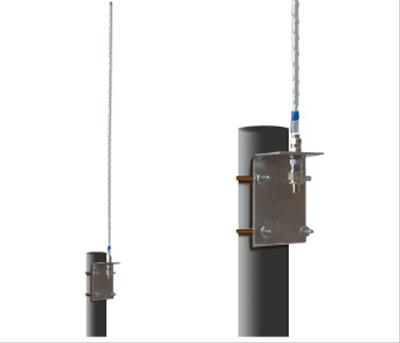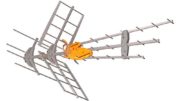For many of us, antennas are a passion. We spend hours and dollars, more hours and more dollars, in pursuit of the perfect FM and TV reception. Yet, most of use rely on combination AM and FM antennas, or worse, single-wire leads to do the heavy lifting in the AM antenna world.
If you are just as serious about AM as you are about FM, there is an antenna for you. It’s the DX Engineering AFHD-4, and it’s just the thing for the serious “DXer.” It’s a simple, monopole antenna that can be mast or attic mounted and promises to deliver the ultimate signal to fans of AM radio.
What makes a good radio antenna?
AM/FM antennas tend to be simpler than TV ones for a couple of reasons. First of all, a TV antenna needs to be optimized to a very wide range, from about 100 to 800 megahertz, in order to get all VHF and UHF frequencies. On the other hand, AM radio’s range runs from .5 to 1.6MHz, and FM runs from 88 to 108MHz. That’s a much smaller spread than you need for television, which takes up about 550 MHz. So an AM/FM antenna doesn’t need a lot of extra “stuff.”
AM also has much narrower channels, meaning that even the best quality AM signal isn’t going to be CD-quality, at least not traditional AM radio. HD Radio is digital radio that’s broadcast on FM bands as a simulcast of AM radio, and the quality can be quite good. But, as far as good ol’ AM… an antenna just doesn’t have to work hard to get AM audio quality. Not only that, many AM stations are massively powerful clear channels which broadcast across wide open spaces on reserved channels not used by any other station. They are intended for emergency use and can often be heard from several hundred miles away.
How to get great AM reception
Of course if you do want to get the best AM possible you’ll have to abandon that little wire or loop antenna at the back of your AV receiver. It just won’t cut it. Many antennas will have some sort of AM loop on them, because receiving the AM signal doesn’t make a difference to the FM and TV signals, and because adding an AM loop adds a lot of value.
AM antennas install easily on a mast or in an attic just like other antenna. If you plan on running to an AV receiver, you might need to use a 300 ohm matching transformer. Look at the back of your receiver to see if it has dual bare wire leads for an antenna. Depending on your situation you may also be able to use an inexpensive splitter/combiner. That way you can use one wire to carry the AM signal down to your receiver. After that, you can split it back there. This particular antenna will serve for both AM and FM as well. Therefore, you may need a splitter if your AV receiver has two different inputs.
Of course, your situation may (and probably will) vary, but isn’t that half the fun? No matter what, you’ll know you can get the best results for every kind of antenna when you shop at Solid Signal.





